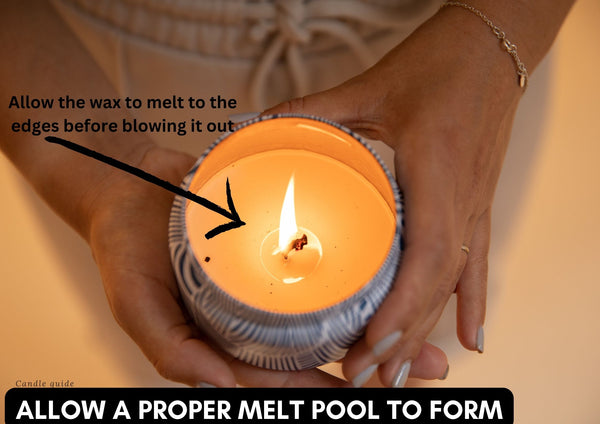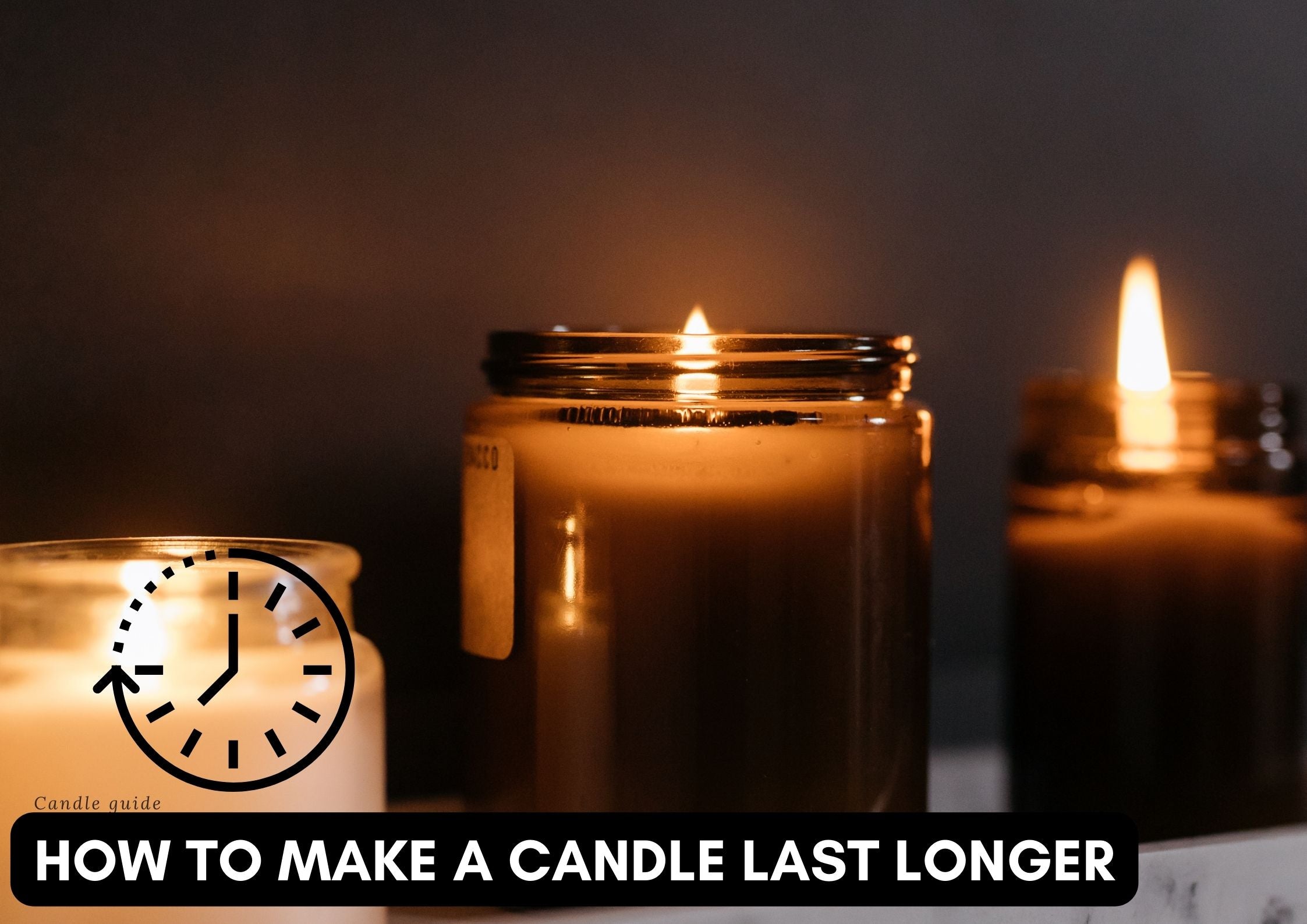How to make a candle last longer (Top 5 tips)
Oct 24 , 2022
Buying really special, exotic scented candles is no cheap affair, so it's in all of our interests to make the most of these fabulous candle creations and enjoy their soothing light and fragrance for as long as possible.
Let's take a look at five ways to get the most out of your candles!
Of course, the burning time of a candle depends on things like the amount and type of wax used and the thickness of the wick, but how it is used and handled also makes a difference.
Below, we have put together five steps that, if not taken, can drastically reduce the "lifespan" of your candle.
Don't burn a new candle for only a short time
When using the candle for the first time, it is important to allow enough time for the wax to melt over the entire surface of the candle, up to the edges of the pot.

Failure to do this and extinguishing the candle after a few minutes of burning may lead to tunnelling.
Tunnelling occurs when the wax does not melt over the entire surface, but only in a small circle around the wick. This causes the wick to become buried in the wax, which in the long run can lead to the candle frequently extinguishing itself.
Since a candle burnt in this way uses only a small proportion of the wax, it will clearly have a shorter burn time.
Tunnelling can be caused by a number of factors, but the most common is poorly chosen burning times.
Waxes made from natural materials (such as soy wax) harden after solidification, so if they melt during use, they will melt more easily on the next lighting than wax that has not melted before. It is therefore important to wait for the full surface of the wax to melt each time it is used.
Let the candle harden before each use
Since, as we said before, natural waxes harden after drying, you can get the most use out of a candle made from these materials if you take at least a few days off between uses.

The amount of time you allow your candle to cure is really up to your patience, but it's definitely a good idea to at least allow the wax to dry completely. It's also worth waiting this out because it's safer to leave the candle alone and easier to cut back the wick if it's needed.
Use the candle in a place away from gusts of wind, and drafts
Although the use of scented candles is generally recommended only in well-ventilated rooms, this does not mean that the candle itself should be exposed to air currents.
A sudden gust of wind can increase the heat given off by the wick, which, as well as leading to uneven burning, can also reduce the lifespan of your candle.
Strong gusts of wind will lead to imperfect combustion, resulting in wax that has reached the candle flame emitting soot and smoke instead of heat.
Not only can this drastically reduce the burn time of our candles, but it can also impair the dispersion of the fragrances, which need a high enough burn temperature to spread properly.
The best thing to do is to light your candle in a place sheltered from the wind, but still ensure that there is adequate ventilation in the room to prevent the accumulated fragrances from triggering an allergic reaction in those who are sensitive to them.
Keeping the candle clean
To understand why we need to keep candles clean, we need to know a bit more about how they work.
To put it very simply, it's really just that the flame of the wick produces heat, which melts the wax. The melted wax then, thanks to a phenomenon known as capillary action, almost 'crawls' up the wick to feed the candle flame as it reaches its tip.
If the indentations running down the side of the wick become blocked by some kind of impurity, this reaction is blocked and our candle will go out prematurely. For this reason it is important to avoid getting contamination in the melted wax.
These impurities most often come from the candle itself and are present in the form of soot. Very large amounts of solids can be introduced into the candle, for example, when it is blown out and the loose fly ash on the tip of the wick gets caught in the still melted wax. The easiest way to avoid this is to smother the flame instead of blowing out the candle and then (after it has completely cooled down, of course) cut the wick back.
Airborne dust is a source of pollution that we need only fear if we use candles only as decorations for months on end. In such cases it is a good idea to store them covered, or if this is not possible, to blow the dust off the surface before use.
Trimming the wick
It is a good idea to cut the wick to the right length after each use for several reasons.
A short wick will "soak up" the melted wax more evenly, and will burn with a much brighter and cleaner flame. If this alone is not reason enough to cut back the wick, consider that a candle with a short wick will burn much less soot and burn much longer, as long wicks tend to absorb more wax.
A well-chosen wick of the right thickness and length will absorb as much wax as it can burn. If too little wax reaches the tip of the wick, the candle will often burn out, and if too much, the excess wax will be virtually wasted in the form of soot.

As we've seen, with a few simple steps and a little precaution you can dramatically increase the life of your candle, so the above advice is definitely worth considering.





